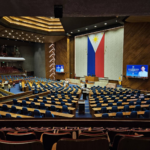
MANILA — After domestic inflation started to rise again in September to 6.9 percent, its highest level since October 2018, the Bangko Sentral ng Pilipinas (BSP) on Wednesday reaffirmed its readiness to take more monetary actions.
According to the Philippine Statistics Authority (PSA), the rate of price increases accelerated in the ninth month this year due mainly to higher food and non-alcoholic beverages index after a deceleration in the previous month to 6.3 percent.
To date, the average inflation stood at 5.1 percent, way above the government’s 2-4 percent target rate.
The BSP stated that the inflation rate last September is within its forecast rate target range of 6.6 to 7.4 percent for the month and is consistent with its assessment of “inflation remaining above target over the near term as price pressures broaden and signs of further adverse second-round effects emerge.”
“Upside risks continue to dominate the inflation outlook in the near term,” it said.
The BSP said risk drivers include the “potential impact of higher global non-oil prices, pending petitions for further transport fare hikes, the impact of weather disturbances on prices of food items, as well as the sharp increase in the price of sugar.”
It said these factors are expected to be countered by weaker-than-expected global economic recovery.
“Nevertheless, inflation risks are seen to be broadly balanced in the medium-term as global commodity prices ease going forward,” it added.
The central bank stated that its most recent monetary policy actions “are intended to bring inflation and inflation expectations back to the target to ensure the balanced and sustainable growth of the economy in the medium term.”
“The BSP is prepared to take further policy actions to bring inflation toward a target-consistent path over the medium term, consistent with its primary objective to promote price stability,” it said.
In addition, the BSP asked for urgent non-monetary government initiatives to alleviate persisting supply-side pressures.
“The BSP will continue to carefully monitor and assess pertinent economic developments that could affect the price dynamics and growth prospects of the country,” it added.















